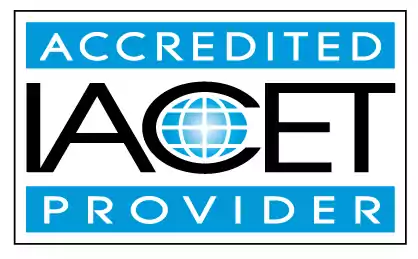Describe ways to maintain communication and ensure preparedness during emergencies
Learn how to maintain communication and ensure preparedness during emergencies in early childhood education and child care centers. Discover additional provisions to include in your emergency preparedness plan to keep children safe and secure. Be proactive in protecting the well-being of your students and staff.Trainings incorporating this outcome
Proficiency Level
Price
2 hours courses
Related Outcomes
- Describe ways to communicate effectively with others.
- Describe the components of an emergency preparedness plan for child care facilities
- Define what is an emergency and the legal requirements for emergency preparedness for child care professionals.
- Describe the components of emergency preparedness in the child care setting.
- Describe procedures for communication and preparation during an emergency.
- Describe additional provisions to the emergency preparedness plan
- Describe how language is one of the many ways through which culture affects development.
- Describe the proper procedures of medication administration including: authorizations forms, documentation, storage, training, emergent issues, and resources.
- Produce an emergency preparedness plan
- Describe ways to interact with parents that will create a positive experience for both the parents and their children.
- Identify the elements of an emergency preparedness plan
- Demonstrate understanding of considerations before completing an emergency preparedness plan.
- Describe the stages of grief and the different ways children react to grief and stress.
- Recognize the importance of maintaining confidentiality and privacy in communication with families.
- Recognize the importance of maintaining confidentiality and privacy in communication with staff.
- Describe ways child care professionals can support advocacy issues.
- Identify best practices when communicating with emergency personnel.
- Describe ways that coaches and mentors can observe and assess coachees and mentees.
- Teachers will identify different ways to communicate with families
- Describe what and how to respond to the following emergency situations: loss of water, serious injury, loss/death of child, etc.
Related Articles
- D.C. Emergency Preparedness Training
- Emergency Preparedness Training Every Childcare Provider MUST Know
- Emergency Preparedness Training
- Ready and Resilient: The Importance of Emergency Preparedness
- The Importance of Emergency and Disaster Preparedness Plans for Child Care Providers
- Frosty’s First Aid Kit: Emergency Preparedness Tips for Educators During the Holidays
- Emergency Preparedness Training for Childcare Providers: Keeping Kids Safe in a Crisis
- Child Care Centers and Providers Emergency Preparedness Training
- Emergency Preparedness training
- Save on Emergency Preparedness Training!
- Nevada Initial Training Requirements for Emergency Preparedness
- 6 Hour Emergency & Disaster Preparedness Course
- Emergency Preparedness in Childcare: Creating and Practicing Safety Protocols
- Essential Resource for Child Care Providers: Free Emergency Preparedness Plan
- Why should childcare programs have an emergency plan?
- 10 Fun and Engaging Ways to Teach Kids About Black History Month!
- Enhancing Communication with Families in Child Care: Building Strong Partnerships
- Prepare for Summer Emergencies with Pediatric First Aid and CPR
- How to Start a Daycare and Maintain Professionalism
- Easy Ways to Get Your ECE Units Online!
 0.2 CEUs
0.2 CEUs